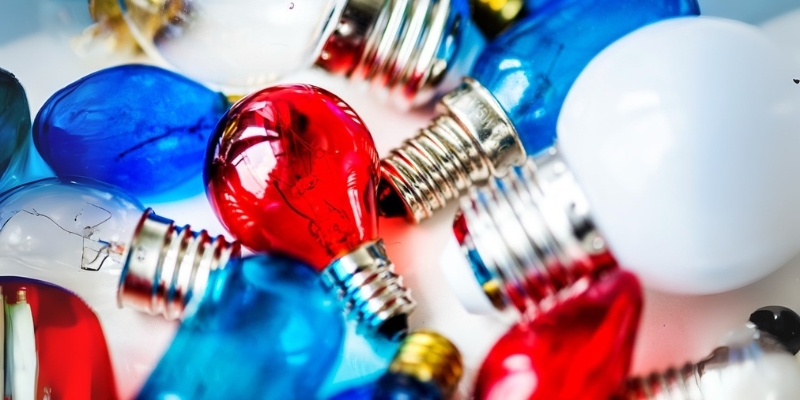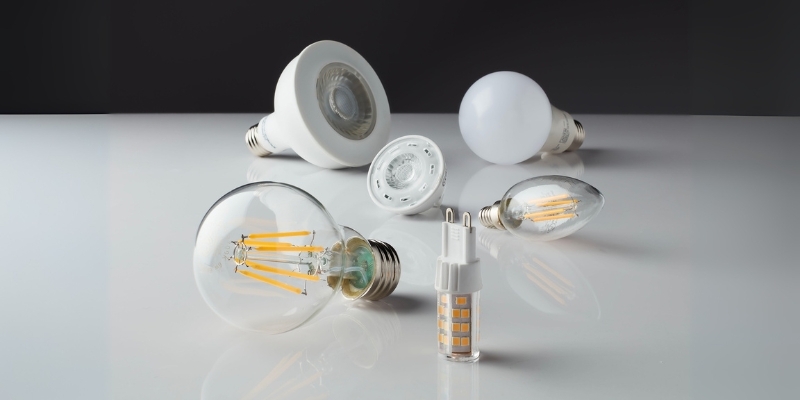Enjoy FREE SHIPPING on orders over $100 | Call us with any questions (800) 865-7221 Request a Call

Choosing the right light bulb involves more than just considering wattage or price. It is about understanding the different types of light bulbs, their color, efficiency, and even how to dispose of them responsibly. This guide will walk you through the most common types of light bulbs to help you make an informed choice for your home or office.
Here’s a quick overview of the main bulb types you’ll see around your home or workplace:
All the places do not require harsh white light. In some instances, the mood can be right with an light red bulb a lighter color. These bulbs feature soothing, warm-glow light, and are available in dimmable reds and less intense amber-colored light, which are perfect in a bedroom, living room, or fireplace environment.
When choosing light bulb colors, consider:
Using a light red bulb in small accent fixtures can add warmth without overwhelming. When layering light with mixed colors, keep base tones consistent to avoid clashing brightness.

Compared to CFLs or older incandescents, LED bulbs consistently outperform on energy use and longevity. LEDs are up to 90% more efficient than incandescent bulbs and typically last much longer—a major win for low-maintenance and green performance.
They also run cool, are dimmable (in most cases), and come in a full range of shapes and colors, including decorative red or vintage filament styles.
Many people assume all bulbs can be tossed. But when it comes to how to dispose of LED light bulbs, recycling is best. LEDs are not toxic—they don’t contain mercury—but nearly 95% of their materials (glass, metals, circuits) can be reused.
Here’s what you should do:
CFLs or fluorescent tubes are more hazardous due to mercury, so they must be handled separately at certified drop-offs.
Think about what matters for each room:

Swapping older bulbs for LEDs not only saves on energy bills—hosting fewer trillions of on-off cycles and heat outputs—but also reduces replacement frequency dramatically. As public policy shifts away from incandescents (banned in US since 2023) and phase-out of CFLs nears, LEDs remain the future-proof, eco-smart choice.
Bonus: many LED bulbs are recyclable, with materials recoverable for new products—making them a smarter, more sustainable investment.
From ambiance to energy use to environmental impact, choosing the right type of bulb makes a big difference. If you're after cozy warmth, a light red or warm-toned bulb may be perfect. For efficiency, lifespan, and ease, LED bulbs are the standout choice. And when it’s time to replace them, recycling helps keep materials out of landfills and supports a cleaner future.
At AQ Lighting, we offer a wide range of bulb types and color options to suit every style and space. Need help comparing bulbs or planning installations? Our team is happy to help you pick the perfect match and guide you through disposal options too.
Common bulb types include incandescent, halogen, CFL, fluorescent, and LED. LEDs offer the best balance of energy efficiency, lifespan, and minimal heat output. CFLs and fluorescents use less energy than incandescent or halogen bulbs but contain mercury and require careful disposal.
A light red bulb emits soft red or amber-toned light—often used for ambiance in bedrooms, restaurants, or patios. It creates warmth and mood rather than bright task lighting.
Choose warm white (2700–3000K) for relaxing areas, neutral white (3500–4100K) for everyday rooms, and daylight (5000–6500K) for task spaces like kitchens and garages.
While environmental agencies allow LEDs in regular trash, it’s best to recycle them. Over 95% can be reused—check local drop-off points or store recycling bins. Mail-in recycling kits are also available for bulk disposal.
Incandescents and halogens can go in the household trash—wrap broken bulbs first to prevent hazards. CFLs and fluorescent tubes contain mercury and must be recycled at designated facilities per local regulations.